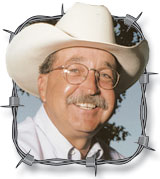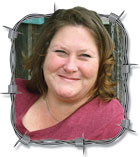Since calving season is finished for another year, I have to admit that I don’t check my cows every single day. In between readying the hay equipment for another season and all of the other regular farm jobs, I’m lucky if I get to lay eyes on them as often as every two to three days to make sure nothing is sick, missing or dead.
However, since I distributed bulls to all the pastures yesterday, I figured I’d better check everything today just to make sure the bulls were still where they were supposed to be. At the first farm, I found two bulls where I had delivered only one yesterday. Naturally, at farm No. 2, there was none. Tired of fighting each other all night, it was easy to drive one of the animals back through the downed fence where they had gotten together. I repaired the fence and headed to the next place.
The third stop was non-eventful. One bull and all the cows and calves were in their designated spots. At the fourth farm, I was able to quickly find the bull, but was one cow short in my count. That was odd, since a new bull introduced for the breeding season tends to keep the herd pretty well bunched for a few days. I drove the perimeter of the farm and spied a single, black cow standing by herself, over on the north side. As I drove the truck closer to where she was standing, I began to run the different scenarios through my head: Was she lame? Had her calf died? Could she be sick? Where was her calf? Close enough to read the numbers on her ear tag, I checked my calving records and knew she had a bull calf that was born during the February blizzard; one of the lucky ones that lived. Her udder was full and as tight as a fiddle string.
Exiting the truck, I heard a faint “baah” coming from somewhere close. Walking around through the knee-high grass, I was shocked to see the head of her calf peeking out through a hole in the ground. A sinkhole had occurred during the recent wet weather and the 300 lb. calf had fallen in. The hole was four to five feet in diameter and about six feet deep. The calf had obviously been trying, unsuccessfully, to free himself from the predicament for several hours. He was scared, tired and extremely hungry while his concerned mother was very protective. How, by myself, was I to free the little guy?
Looking behind the seat of my truck, I started digging through the mess that usually contains everything I need. I first stuck myself with one of the several discarded syringes. I also found the lug wrench I thought I’d lost 2 years ago. I bypassed the nearly-new lariat rope, not wanting to choke the little guy to death during the extraction. Putting OB chains, cans of WD-40, duct tape and baling wire aside, I finally found an old rope halter left over from when the boys showed cattle. I’d make it work.
On my belly, with his momma blowing snot all over me, I was able to get the halter secured over the head of the frightened youngster. Briefly, I considered tying it to the truck, but figured I’d break his neck if I attempted that. So, I dug my heels into the dirt and started pulling like a good roping horse. All of a sudden, the combination of my pulling and the last-chance surge of a desperate calf came together as the calf’s front feet came over the edge while his rear feet caught traction on the side of the hole. He shot out like poop through a goose and came directly toward the force of the pull, leaving me flat on the ground, and coming at me like a defensive lineman at full speed.
About thirty seconds later, when I had rolled sideways to safety, I whispered, “I’m alive!” I was able to move my aching body over onto my side and I could see the cow and calf standing just a few feet from my lifeless form. The calf was sucking like there was no tomorrow and the cow was licking him as if he was a newborn. All was well.
Eventually, I made it to my feet and staggered back to the truck. The calf, as far as I know, is still wearing the halter.
Jerry Crownover is a farmer and former professor of Agriculture Education at Missouri State University. He is a native of Baxter County, Arkansas, and an author and professional speaker. To contact Jerry about his books, or to arrange speaking engagements, you may contact him by calling 1-866-532-1960 or visiting ozarksfn.com and clicking on ‘Contact Us.’







